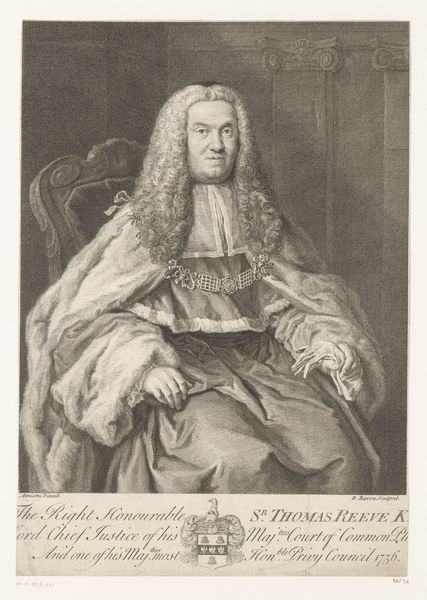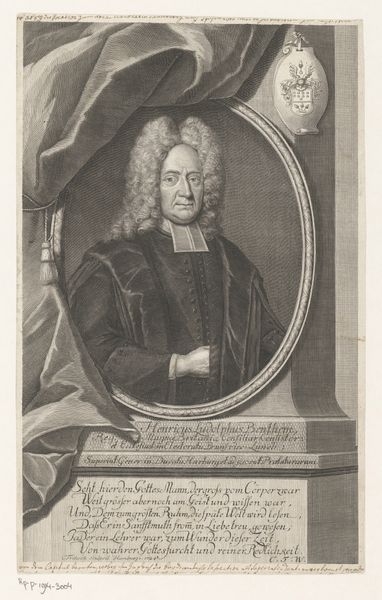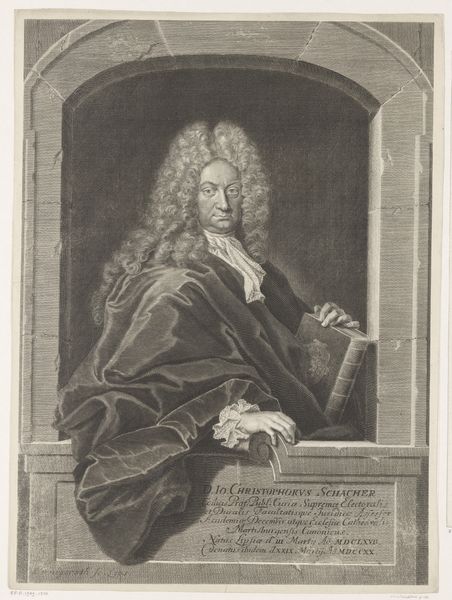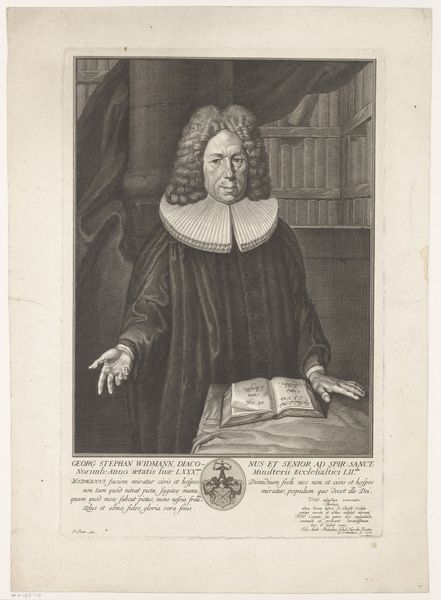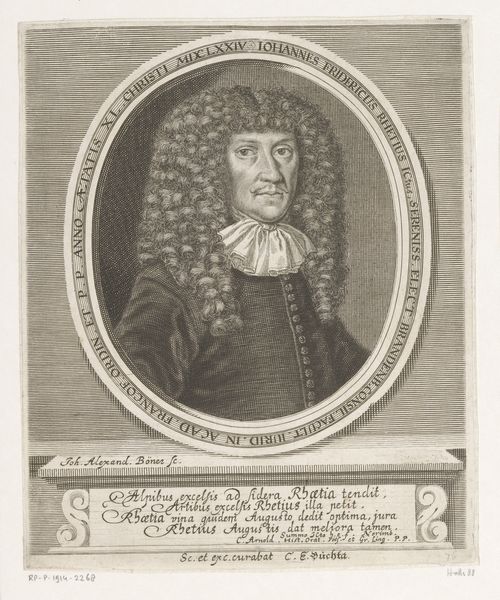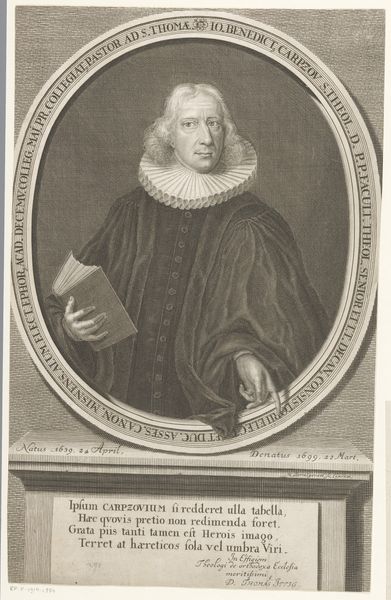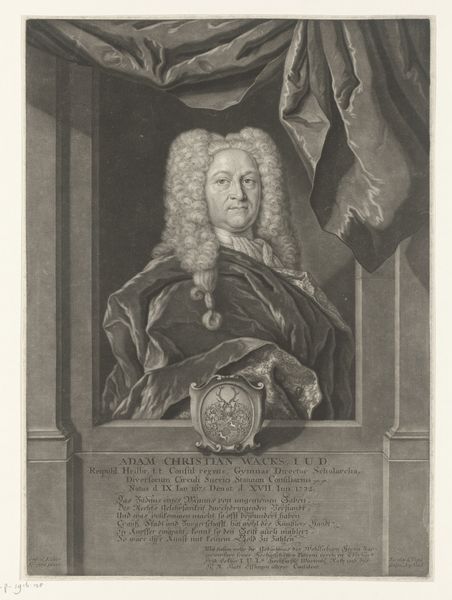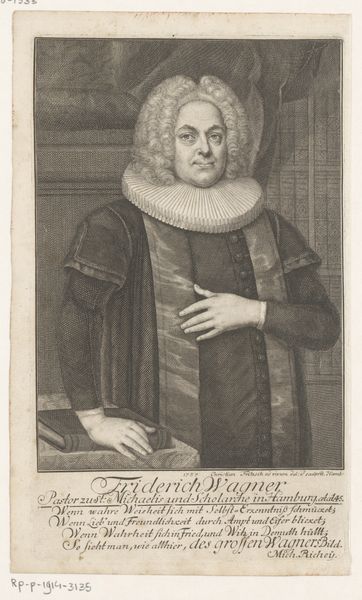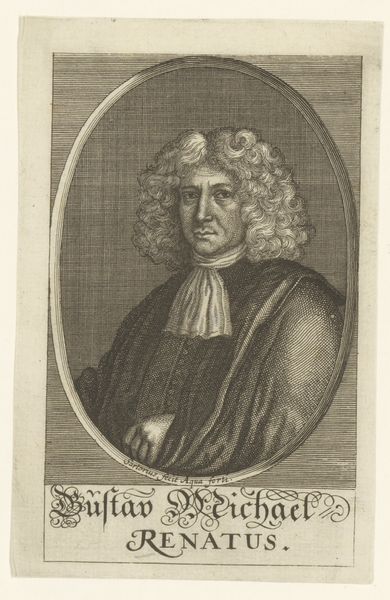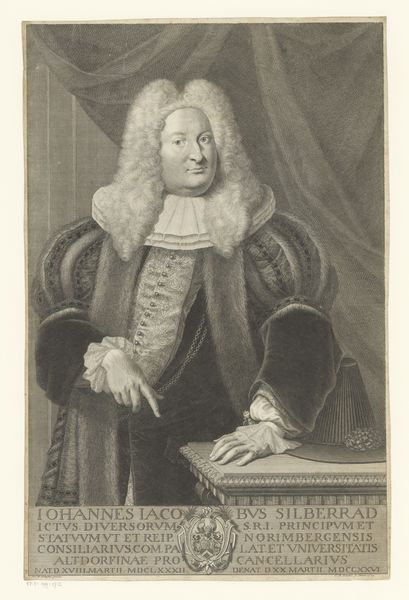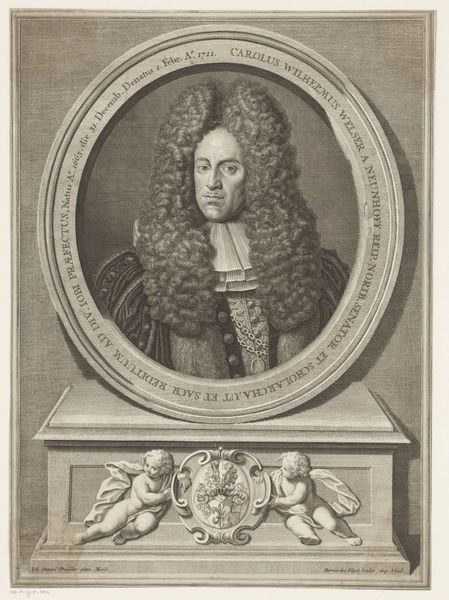
engraving
#
portrait
#
baroque
#
old engraving style
#
portrait reference
#
history-painting
#
engraving
Dimensions: height 314 mm, width 213 mm
Copyright: Rijks Museum: Open Domain
Curator: Before us, we have Bernhard Vogel's engraving, "Portret van Johann Michael Weickmann," dating from before 1737. What strikes you first about this portrait? Editor: The immediate impression is one of opulent rigidity. The texture is very fine, creating contrast, and that wig practically has a structure of its own! The pose, too, feels very carefully constructed. Curator: Constructed, certainly. The meticulous engraving emphasizes line and form above all. Note the use of cross-hatching to define shadows, building volume through tonal gradations. It adheres to established Baroque conventions, but do you notice its potential social function? Editor: Yes, indeed. Vogel leverages established portraiture conventions for promoting the subject's public image. Johann Michael Weickmann is presented here as a pillar of society, evidenced not just by his finery but the memorializing text below. He clearly wanted to portray status. Curator: The textual components further exemplify the function. Placed below the bust of Weickmann are biographical notations about his birth and death, the text emphasizing qualities of integrity, friendliness, virtue, and friendship. Editor: Beyond the sitter and visual devices, the engraving process also shaped its reception, especially due to print’s affordances with reproduction, distribution, and cost. Curator: Exactly. An engraving ensured this portrait could circulate widely, solidifying Weickmann's presence in the cultural memory. It underscores the subject's ambition to transcend the limitations of his lifetime. I find that particularly relevant here. Editor: Right. And the rigid construction almost fossilizes that ambition, trapping it within the precise lines of the engraving. It serves as both homage and artifice. I find myself dwelling on the surface details. Curator: The dialogue between texture and symbolic purpose is incredibly rewarding when viewed with a consideration of both medium and cultural moment. It's far from just an image, I think, with multiple contexts merging to yield meaning. Editor: I concur entirely. Examining it through those different facets really allows us to understand Weickmann’s position in history and also the social purpose of creating engravings such as this during the Baroque period.
Comments
No comments
Be the first to comment and join the conversation on the ultimate creative platform.
